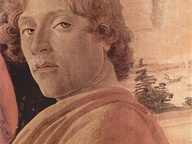Padiglione del Montenegro - Čovjek-Uomo-Umano

57. Esposizione Internazionale d'Arte - Partecipazioni nazionali
Dal 12 May 2017 al 26 November 2017
Venezia
Luogo: Palazzo Malipiero
Indirizzo: San Marco 3078-3079/A
Curatori: Žana Filipovic
Sito ufficiale: http://artbiennale.me
Alla Biennale Arte 2017, il Montenegro è rappresentato per la quinta volta dal ripristino della sua indipendenza. Nel 2009, il Montenegro è stato rappresentato da Miodrag Dado Đurić (Le Elegie Zorzi), nel 2011 da Marina Abramović (La fabbrica di frigoriferi e le acque chiare), nel 2013 da Irena Lagator Pejović (Pensare attraverso l'immagine) e nel 2015 da Aleksandar Đuravčević.
Quest'anno, il Montenegro è rappresentato dal progetto "Čovjek-Uomo-Umano" di Ivana Radovanović e Adin Rastoder, nel padiglione situato al Palazzo Malipiero, vicino al Palazzo Grassi.
Il patrono della presentazione montenegrina alla 57. Esposizione Internazionale d'Arte - La Biennale di Venezia è il Ministero della Cultura del Montenegro, il suo produttore esecutivo è il Centro d'Arte Contemporanea del Montenegro, il commissario del padiglione è Nenad Šoškić, mentre il curatore è Žana Filipović, storica dell'arte.
Le opere di Ivana Radovanović e Adin Rastoder rappresentano due concetti artistici indipendenti con un tema condiviso - il tema di antropologia, e l'uomo - che corrisponde pienamente con il tema di questa edizione "Viva Arte Viva", dato che è universalmente noto che la fonte dell'arte è umana. Questo concetto è un invito, un appello a cambiare il mondo in cui viviamo. L'arte è un simbolo, un mezzo che tiene insieme popoli e culture. L'arte è il verotrionfo dello spirito umano.
I due artisti selezionati appartengono alla generazione giovane, e oltre a trasmettere grandi potenzialità creative ed espressive, sono ancheinformati dalla teoria dell'arte, in modo che la loro visione, energia e forza artistica sono i fattori chiave del progetto "Čovjek-Uomo-Human".
Per le loro caratteristiche visive e messaggi artistici, i progetti di Ivana Radovanović e Adin Rastoder rappresentano delle componenti separate, ma allo stesso tempo costituiscono un insieme esteticamente costruito e potente. I due concetti artistici si combinano nell’espressione di due aspetti diversi dell'essere umano. I loro reciproci contrasti in realtà creano un messaggio unico che ci invita a riflettere profondamente sul significato dell'esistenza umana. Il loro progetto è quindi un appello a cambiare il mondo in cui viviamo per tornare a l’integrità dei suoi valori essenziali.
La scultura di Rastoder è una figura immaginaria che emerge dai più fondamentali principi antropologici. Il suo processo creativo è un percorso che conduce a delle soluzioni e risposte inusuali, astratte, nuove. Persistente nella sua ricerca del senso, tramite indagini meticolose, lui coltiva il proprio linguaggio creativo personale. L’artista disegna e modella delle figure umane cercando di giungere ai loro principali tratti caratteriali. Lui osserva l'uomo; analizza attentamente i dettagli che costituiscono il suo carattere e pensieri; sente e rivive il suo essere più intimo; lo immagina e li dà corpo; allontanandosi dal visibile, crea una nuova visione dell'UMANO. Le sue figure hanno tutte la stessa forma, ma ciò che le rende diverse sono i colori, che simboleggiano ciò che è individuale e ciò che è condiviso in loro. La visione ottimistica del mondo è espressa dall'autore nell’abbigliamento variopinto delle sue figure. Come un valore speciale, si palesano i rilievi e l'espressività dei suoi ritratti, leggermente girati verso l'alto, come volendo riferire alla natura dello sguardo e ad una forte esperienza di bellezza e luce.
L’opera di Ivana Radovanović mette in risalto l'assurdità e l'impermanenzacome dimensioni fondamentali della vita umana. Di conseguenza, essa dimostra una sensibilità fortemente moderna, segnata dalla distruzione della personalità e dell’individualità. Questo spirito è, infatti, una raccolta e un accumulo di sensazioni, immagini, e frammenti che si possono combinare per formare una nuova sinergia... uno spirito nuovo. Ispirandosi alla poesia "The Hollow Men" di Thomas Stearns Eliot, l’artista si concentra sull’essere umano visto essenzialmente come un creatore e un distruttore, in bilico tra l’Eros e il Thanatos. Queste figure rappresentano delle persone sfacciate o senza una faccia, prive di qualità, spoglie di ogni significato, indifferenti e degradate in termini di dignità umana.
L’apertura del padiglione del Montenegro è il 12 maggio 2017, alle 19.00.
SCARICA IL COMUNICATO IN PDF
COMMENTI

-
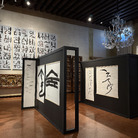 Dal 8 November 2025 al 11 January 2026
Venezia | Museo Correr
Dal 8 November 2025 al 11 January 2026
Venezia | Museo Correr
CARATTERI. Calligrafia e tipografia: Corea del Sud e Stati Uniti
-
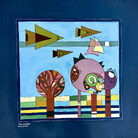 Dal 8 November 2025 al 22 February 2026
Brescia | Museo di Santa Giulia
Dal 8 November 2025 al 22 February 2026
Brescia | Museo di Santa Giulia
Material for an Exhibition. Storie, memorie e lotte dalla Palestina e dal Mediterraneo
-
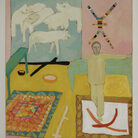 Dal 8 November 2025 al 18 January 2026
Perugia | Perugia, Spoleto e Gubbio
Dal 8 November 2025 al 18 January 2026
Perugia | Perugia, Spoleto e Gubbio
Mimmo Paladino. Antologica
-
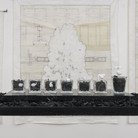 Dal 7 November 2025 al 25 January 2026
Roma | Museo Carlo Bilotti Aranciera di Villa Borghese
Dal 7 November 2025 al 25 January 2026
Roma | Museo Carlo Bilotti Aranciera di Villa Borghese
Silvia Scaringella. Deus sive natura
-
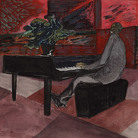 Dal 5 November 2025 al 1 March 2026
Asti | Palazzo Mazzetti
Dal 5 November 2025 al 1 March 2026
Asti | Palazzo Mazzetti
PAOLO CONTE. Original
-
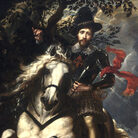 Dal 28 October 2025 al 15 February 2026
Brescia | Pinacoteca Tosio Martinengo
Dal 28 October 2025 al 15 February 2026
Brescia | Pinacoteca Tosio Martinengo
Peter Paul Rubens. Giovan Carlo Doria a cavallo
